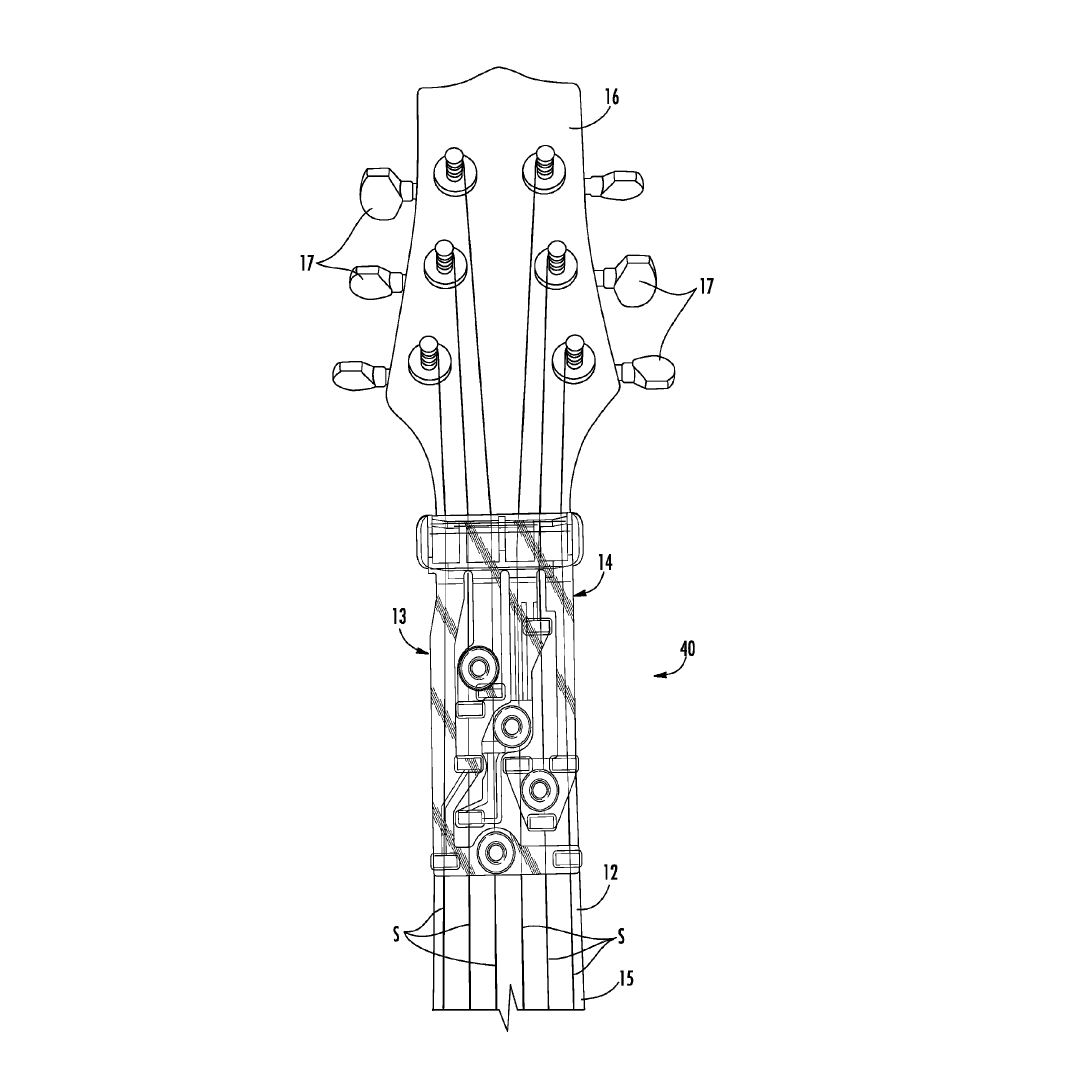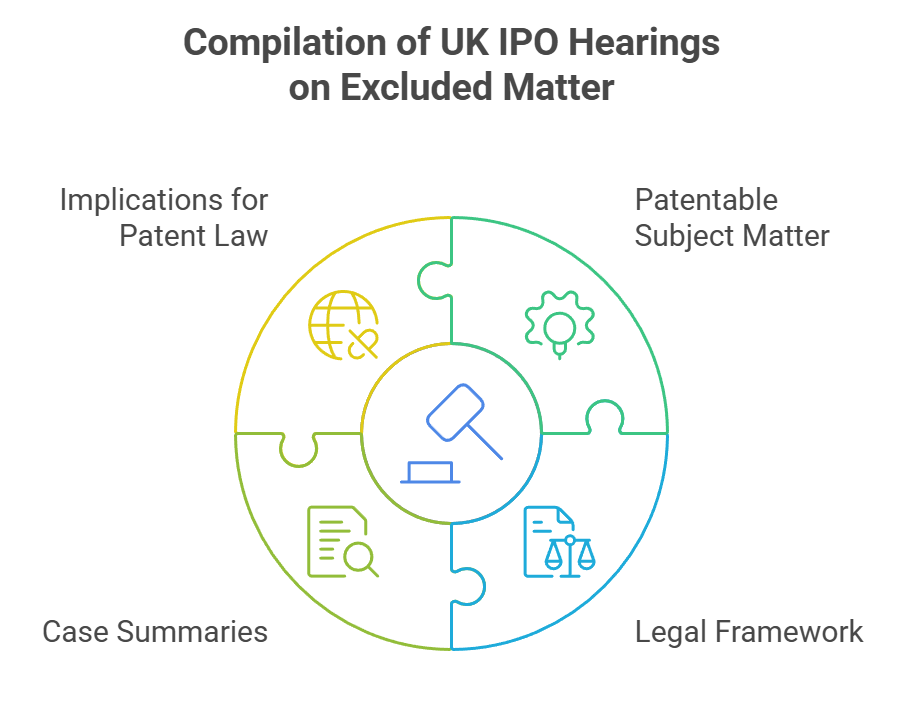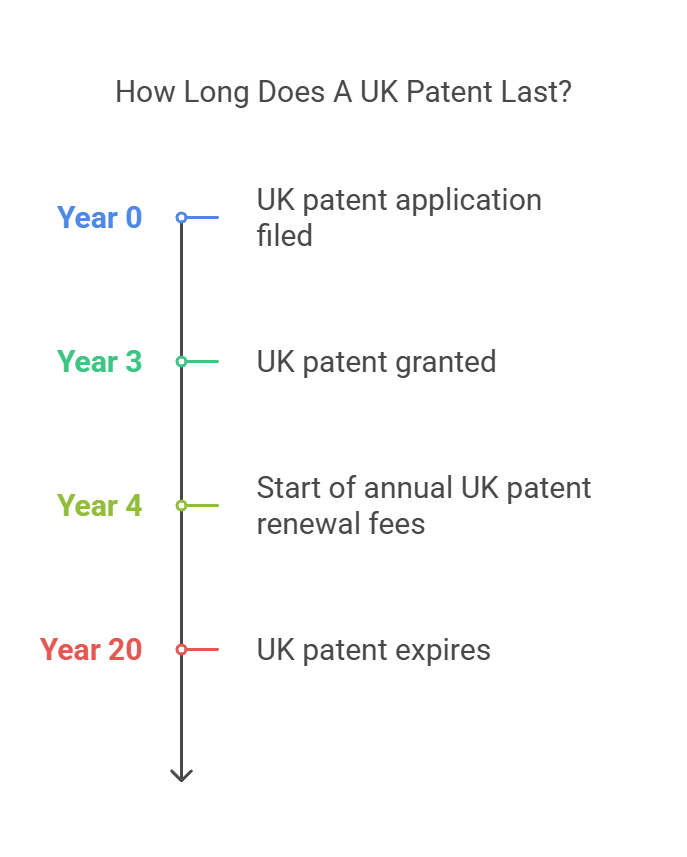- Rockin’ Patent: US Patent No. 8,835,731
- Filed: 5 April 2013
- In the name of: Travis Perry (inventor)
- Title: Chord Playing Attachment Apparatus
- What’s claimed: “Apparatus including a chord playing attachment adapted to attach to a guitar having strings, a fretted neck, head and body, the attachment comprising; a nut having lower surface that rests upon the guitar neck near the head, and a plurality of spaced apart string depressions that each receive and provide support for a guitar string; a chord playing unit adapted to be positioned on the fretted neck of the guitar connecting with the nut, the nut having left and right sides and left and right anchors that removably connect with the chord playing unit, the chord playing unit including a plurality of chord members, each chord member positioned substantially parallel to the strings, each chord member further comprising one or more string depressors positioned at preselected distances from the receiving unit and capable of depressing preselected strings of the guitar when depressed to make a preselected chord.”
- Why this patent rocks: This patent relates to a removable chord-playing apparatus to help someone learn to play the guitar. As explained in the patent itself: “[t]he present invention advantageously fills the aforementioned deficiencies by providing a specially configured chord playing attachment. The chord playing attachment of the present invention includes chord members (e.g., levers) with color-coded finger pads that enable a user to depress the strings necessary to play a chord or part of a chord. The chord playing attachment is also usable in combination with a color-coded training manual for easy learning. In one embodiment, the levers and buttons are removable from a specially configured guitar “nut” so that a user can play the guitar without the chord playing portion.”
If you’re a patent-savvy music tech business looking for patent help, get in touch with Russell IP here!
The information above is for general interest and information only and does not constitute legal advice.







